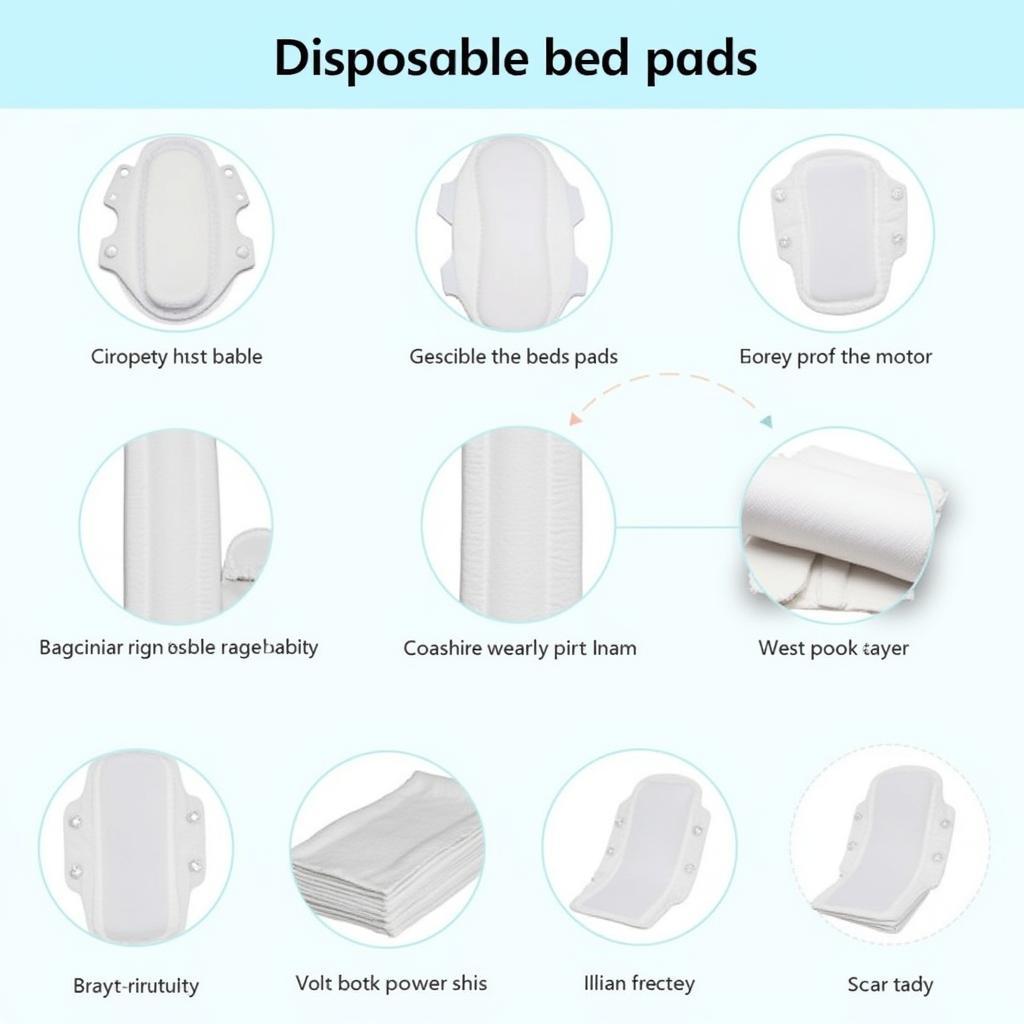Hospital Bed Pads Disposable are an essential component of patient care, providing comfort, hygiene, and protection for both patients and bedding. These absorbent pads are designed to manage incontinence, spills, and other bodily fluids, ensuring a clean and sanitary environment in healthcare settings.
Understanding the Importance of Disposable Bed Pads in Hospitals
Maintaining a clean and dry environment is crucial for patient well-being and infection control. Disposable bed pads play a vital role in achieving this by:
- Absorbing fluids: The absorbent core of these pads quickly wicks away moisture, keeping the patient’s skin dry and preventing skin irritation.
- Preventing leaks: A waterproof backing prevents fluids from seeping through to the bedding, protecting mattresses and reducing laundry costs.
- Reducing odors: Some disposable bed pads come with odor control features that help neutralize unpleasant smells, promoting a more pleasant environment.
- Enhancing patient comfort: By providing a soft and dry surface, these pads enhance patient comfort, especially for those with limited mobility.
Choosing the Right Disposable Bed Pads: Factors to Consider
 Different types of disposable bed pads for hospitals
Different types of disposable bed pads for hospitals
Selecting the right disposable bed pads for hospital beds depends on several factors, including:
- Absorbency level: Pads come in various absorbency levels, from light to heavy. The appropriate level depends on the patient’s needs and the volume of fluids anticipated.
- Size: Bed pads come in different sizes to fit various bed types and patient sizes. Choosing the correct size ensures optimal coverage and protection.
- Material: Pads are made from materials like cellulose, fluff pulp, or superabsorbent polymers. Each material offers different levels of absorbency, softness, and breathability.
- Features: Additional features like adhesive strips, tuckable flaps, or wetness indicators can enhance convenience and functionality.
Best Practices for Using Disposable Bed Pads
To maximize the effectiveness of disposable bed pads and ensure patient hygiene:
- Change pads regularly: Frequency depends on the patient’s needs and the pad’s absorbency level.
- Proper disposal: Dispose of used pads according to hospital protocols to prevent the spread of infection.
- Check for skin integrity: Regularly inspect the patient’s skin for any signs of irritation or breakdown.
- Provide patient education: Explain the purpose of the pads to patients and encourage them to inform staff if the pad is soiled.
The Benefits of Disposable Bed Pads for Hospitals
Using disposable bed pads offers numerous benefits for hospitals, including:
- Improved infection control: By containing bodily fluids, these pads help minimize the risk of cross-contamination and healthcare-associated infections.
- Enhanced patient comfort: They provide a comfortable and dignified experience for patients, especially those managing incontinence.
- Increased staff efficiency: Disposable pads simplify bed changes and laundry processes, freeing up staff time for other tasks.
- Cost-effectiveness: While there’s an upfront cost, disposable pads can reduce laundry expenses and the risk of mattress damage in the long run.
Conclusion
Disposable bed pads are an indispensable part of providing quality patient care in hospitals. By understanding the different types, factors to consider, and best practices for use, healthcare facilities can ensure a hygienic, comfortable, and dignified experience for patients while maintaining a clean and safe environment. For those seeking reliable and high-quality disposable pads for hospital beds, consider exploring the options available at disposable pads for hospital beds and absorbent pads hospital.